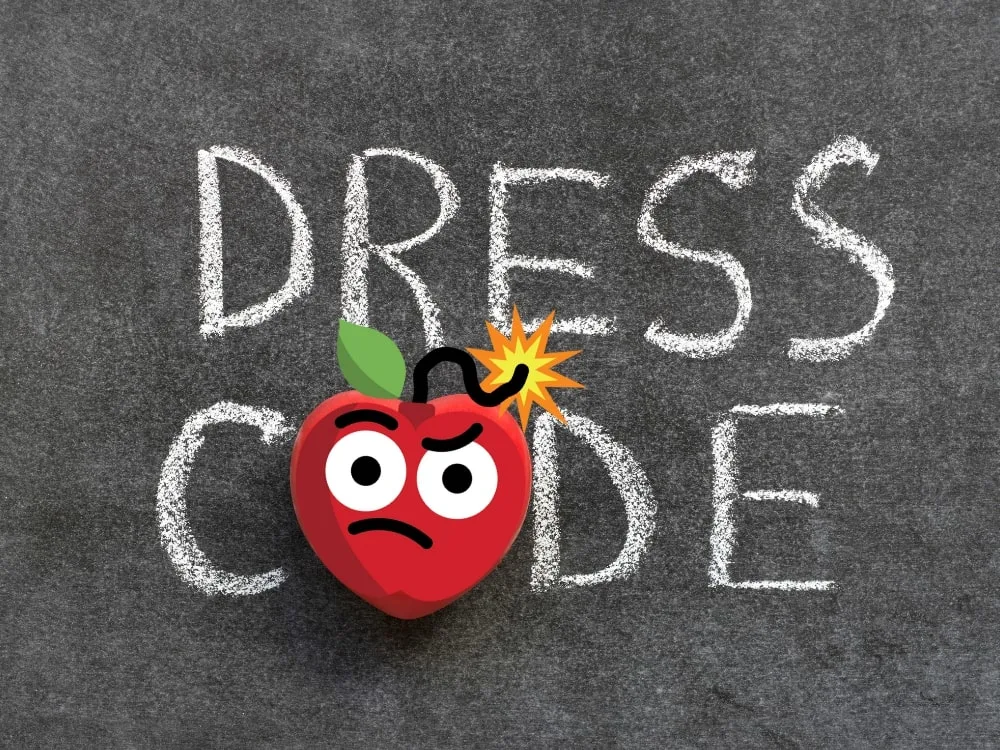Teacher dress codes exist, whether written or implied!
Should there be one? Well, do you trust the adults you hired to be able to dress appropriately for work?
If you said no, you need to examine your hiring practices or just sit down and be quiet.
For as long as the teaching profession has existed, so too have dress code policies for teachers. And as with any nitpicky and micromanage-y rule, so too have problems arisen with the clothes teachers wear.
The administration just loves to complain. ;)
So let’s have a look at all the problems with teacher dress codes and have a laugh at the ridiculousness while we’re here. But also, let’s make sure we do it in style.
Dress Codes for Teachers: Problems and Pet Peeves
Teachers wearing jeans… Ooh, boy!
The teacher dress codes that are written are heavily concerned with jeans. Teachers either cannot wear jeans, can only wear them on certain days, have to wear them with a school T-shirt, or have to pay to wear them.
There is a bizarre obsession that the administration has over jeans. So unless you want to make a principal’s head burst into flames, learn the hard facts about if and when jeans are allowed.
The average teacher’s dress code involves vague language such as “no clothing that distracts from student learning, disrupts the school environment, or causes disharmony in the workplace.” Wording like this can be twisted by awful administrators to bully just about any teacher for any piece of clothing.
Of course, jeans are the most commonly addressed item. Meanwhile, leggings seem to take a close second place. Teacher can wear leggings!
…Sort of.
Sometimes leggings are outright banned. At other times, your behind has to be covered while wearing them.
Next is flip-flops, open-toed shoes, and “tight or ill-fitting clothing”, which must be a minefield when trying to address.
Some more odd dress code rules prohibit capri or khaki pants, Birkenstocks specifically, uncovered tattoos, and shoes must match the outfit. (Will they call a fashion expert to determine this, or are we just talking about the same color?)
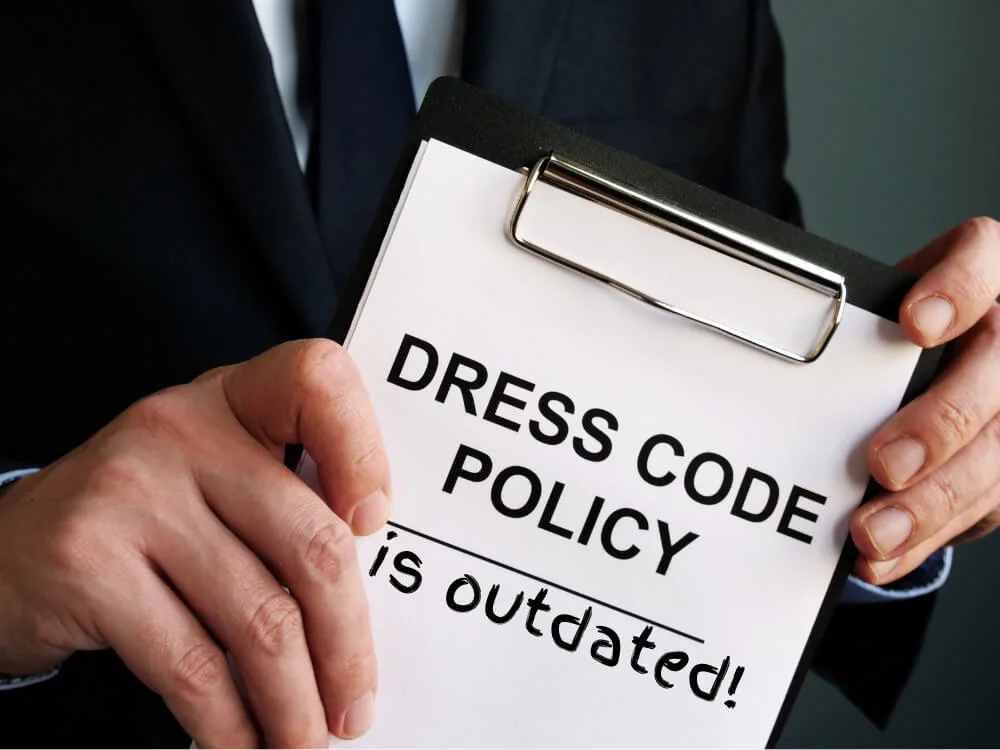
Litchfield School District in Arizona explicitly prohibits “visible undergarments, any visible cleavage, and bare midriffs,” which is embarrassing because they think they need to tell their teachers that. They also suggest “natural hair color,” which makes me wonder how anyone over 50 feels about that!
In Hawaii, most schools do not have a teacher dress code because of the climate. One teacher said, “We can wear jeans, sandals, or workout clothes. We are on an island that is always hot and humid with no AC in the classrooms, so why stress about what to wear?”
Overall, if you believe your employees are professionals, you should trust them to be able to dress appropriately. End the micromanagement of teachers (and, let’s be honest, adults).
But it seems many administrators do not even trust their teachers to dress themselves correctly.
Teacher Dress Codes and Performance Evaluations: Top Stinkers
Oh. Yay. Performance reviews. If there was one admin-beloved task that was enough to make us hate teaching, it’s teacher evaluations.
Whether you prefer stylish clothes for teaching, cute clothes, or something completely blob-like that will raise the eyebrows of zero alarmists, the admin WILL find a reason to pick on you. Per the dress code for teachers, of course.
Here are some ludicrous comments that were made on teacher evaluations relating to dress code:
- “You wore pants to conferences; most other teachers wear dresses.”
- “Your clothes are too tight.”
- “You must tuck in your shirts.”
- “You should wear a more supportive bra.”
- “Your outfit was intimidating because it looked expensive.”
- “The way you look is distracting to students. Try wearing more muted colors.”
- “You look more professional in neutral colors.”
- “Try adding engagement by wearing fun jewelry.”
- “You were wearing a sleeveless top in your classroom.” (The air conditioning was broken, and it was already 90 degrees at 7 AM.)
- “You were out of dress code for wearing leggings.” (The teacher was 9 months pregnant, and they were maternity pants. She also wore a button-down shirt that was long and almost reached her knees.)
- “You wore a sleeveless turtleneck on a field trip.” (The bus driver called the principal and said the teacher was dressed inappropriately, and she got written up.)
- “You had three toes showing, and peep-toe shoes means only two toes can be showing.”
Get the Books That Started It All
Before the blog, the podcast, the merch store… there were the best-selling books.
If you like the content on this site, then you’ll LOVE the Teacher Misery books. They’re jam-packed with teaching insanity, ridiculous true stories, and all the commiseration about the profession you’ve come to know, adore, and respect.
Follow the links below to get your copies today!
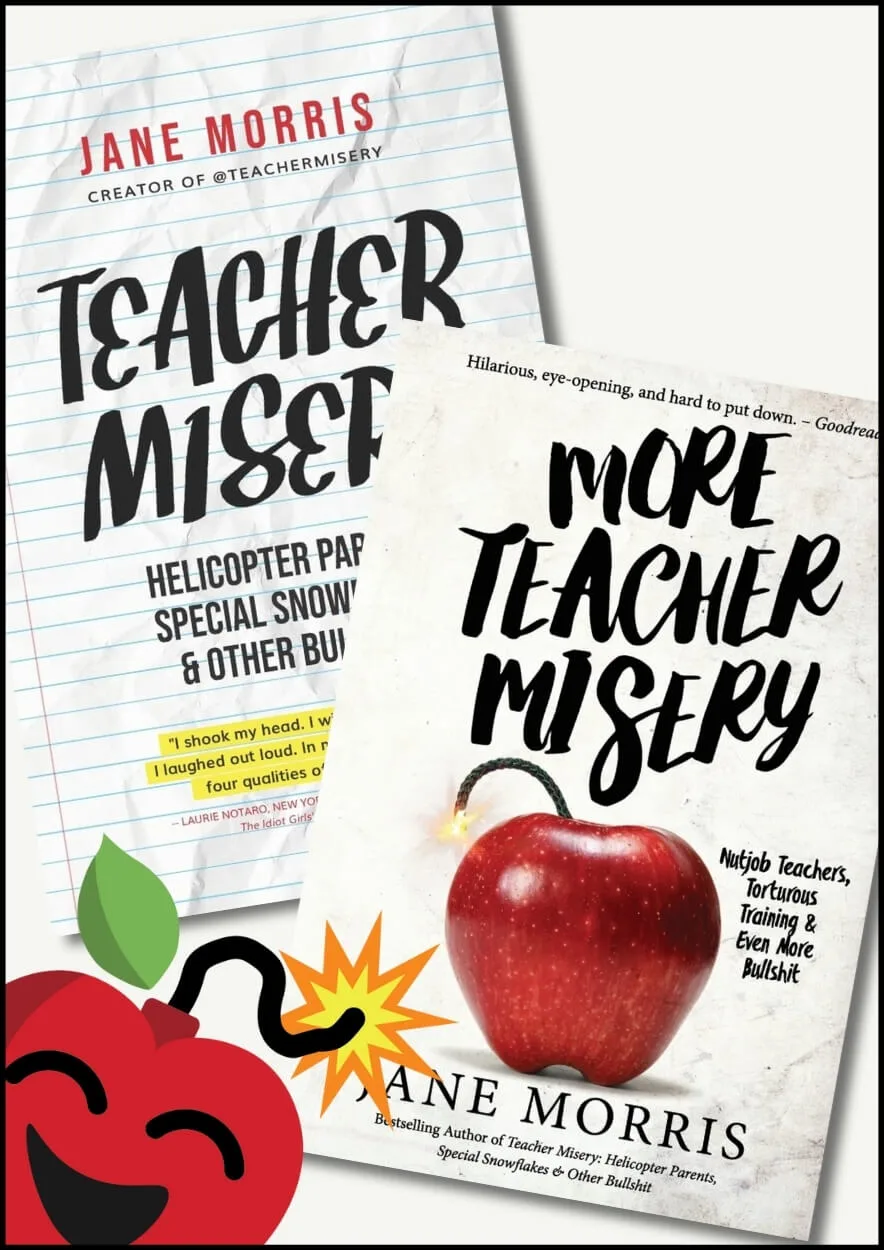
The Teaching Dress Code in Practice: One Teacher’s Experience
Jaclyn Kirby was a brand new teacher, and it was her second day on the job when she had an embarrassing and ridiculous situation about her clothing.
I ran into my mentor teacher in the office, and she asked how my first day went. “It was a lot, but good!” (Everything was always good when you asked me.)
The secretary told me someone donated thirty free dictionaries to the third-grade classes. I bent down to the floor and piled three massive boxes of dictionaries into my arms. I struggled to hold it all but pretended like it was light as a feather (I believed asking for help meant you’re a failure, and if you’re struggling, never let anyone see you sweat).
The principal and the secretary stared at me as I maneuvered the boxes onto one knee to be able to open the door and walk out. I thought they were looking at me weirdly, but I ignored it and said, “Have a great day!” as I walked out of the office.
I made it to lunch and collapsed at my desk to scarf down the oatmeal I brought and then get as many copies made and lesson plans done as I could before lunch ended. Right as I went to take a giant bite, I heard my door unlocking. I quickly swallowed and stuffed my oatmeal back into my bag just as my principal walked in (even on my lunch, I was scared to be caught eating and not working).
When asked how I was doing, I said everything was going amazingly. Then she started talking about my outfit. Before the school year started, I had gone to TJ-Maxx with my credit card and purchased a few “teacher clothes”. I was mindful of wearing appropriate clothing because I already felt insecure about looking too young.
My teacher clothes could be closely compared to frumpy, super modest grandma clothes.
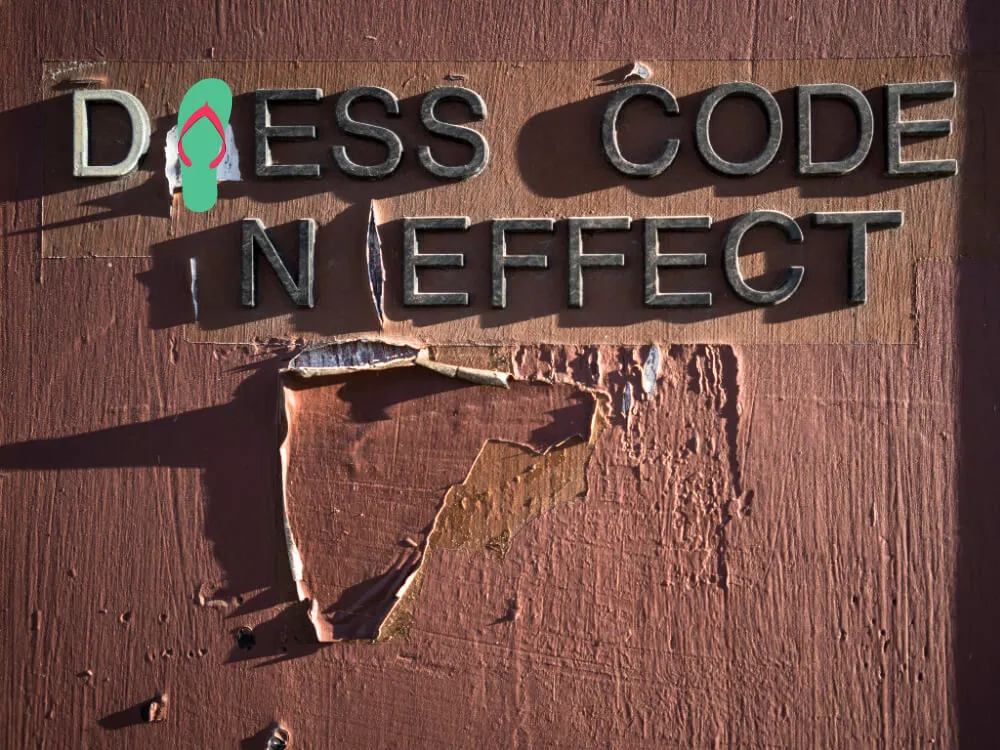
On this day, I wore jeans, white slip-on sneakers that looked a little like nurse’s shoes, and a floral blouse that went high up on my neck, had sleeves past my elbows, and went down past the button on my jeans.
As I was sitting there, my principal talked about how the school dress code doesn’t allow students to show their midriff, so it is not appropriate for a teacher to wear a cropped shirt. I looked down at my shirt, which completely covered all skin from the high neck down, looked back at her, and said, “I agree.”
She said that she and the secretary saw me in the office that morning, and while I was carrying the boxes, which were pulling on my clothes, they saw a sliver of my stomach. They would both feel more comfortable if I wore a school t-shirt instead. She tossed me a huge school shirt.
I felt my skin burning and my throat closing up with embarrassment and shame. I had been highly intentional about being appropriate. Maybe if I had raised both my arms as high as I could, the shirt might’ve shown a quarter inch of my skin, but I was so mindful to always look professional in front of the students, so it never happened.
My immediate reaction was, “Of course. I completely understand.” She left, and I shamefully went to the bathroom to change. I usually wear a size small shirt, so the large one nearly touched my knees.
Thankfully, no students or staff asked about or seemed to notice my outfit change. I think I might’ve died of embarrassment if they had.
In the afternoon, I took my class out for their last recess during the last thirty minutes, and my principal walked over to me. I wondered if she was coming to apologize. “Hey, Miss Kirby,” she said. She pulled me aside by a tree and started talking about my outfit again. This time it was the outfit that she gave me.
“I saw you walking your class in from lunch, and it’s really just not a good look having you in a t-shirt, jeans, and sneakers. You look just like one of our fifth-grade students walking around.”
I was stunned. Frozen. My principal started telling me about Old Navy. “Yes, Old Navy is where you can buy skirts, dresses, blouses, sandals. Their stuff is really good and professional.”
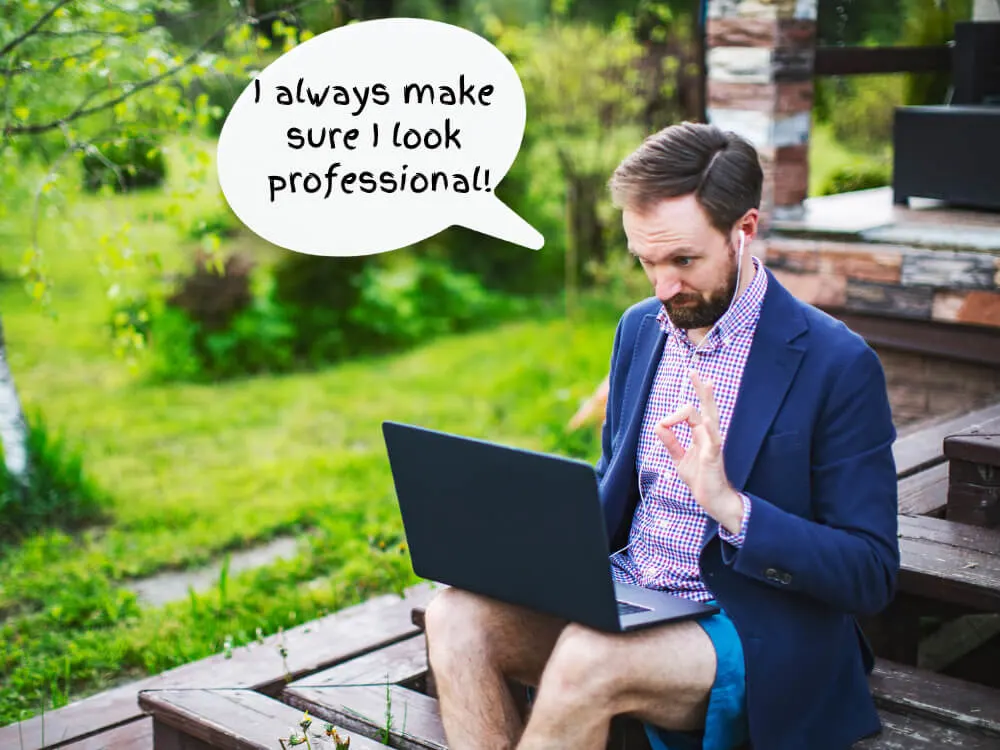
Anger bubbled up inside me. I spent a couple hundred dollars I didn’t have buying modest teacher clothes already. Now she wanted me to go to Old Navy for a new wardrobe when I hadn’t even been paid a single dollar yet?
I felt so embarrassed. So broken. And so sad for not being the professional teacher I’d tried so hard to pretend I was. After school, I looked around at all the other teachers on campus to see what I was supposed to look like.
One lady wore a Hawaiian shirt, khakis, and New Balance sneakers. Another teacher in her mid-thirties wore flip flops and a tank top dress above the knees and showed cleavage when she bent down to fill the copy machine. I was pretty sure that didn’t follow the school dress code for teachers. The third teacher in the staff room was an older lady wearing jeans, sneakers, and a gray Mickey Mouse t-shirt.
I realized it’s only okay for a teacher to wear jeans and a T-shirt if you are much older than me.
The above excerpt is taken from the book: Teachers Are Human Too by Jaclyn Kirby.
Buy Some Merch · Support the Site!
Teacher Misery is by the teachers and for the teachers. Our mission to improve the lives of teachers everywhere.
If you’d like to support the cause, buy yourself (or the burnt-out educator in your life) a gift from our merch store. And, YES, they are all as sarcastic as you’d hope. 😉
Every dollar supports the commiseration!

I Got 99 Problems, and Dress Codes for Teaching are 98 of Them!
Seriously! The tug-of-war over uniforms never stops. It’s like we never left school. (Hah!)
With increasing calls to relax school dress codes, us teachers can keep dreaming of a day when we’ll be trusted to dress ourselves like adults. And until that day, admin gonna admin!
So button up, teacherinos! Hide that neckline, cover that patootie, and leave the denim at home.
With all the reasons they’ll find to pick on you, don’t let your clothes for teaching be one of them.
Oh, and if your school asks you to PAY to wear a pair of jeans, don’t. Or buy some jeggings and really mess with them!
And if worst comes to worse, you can always attend your next class looking like this-


